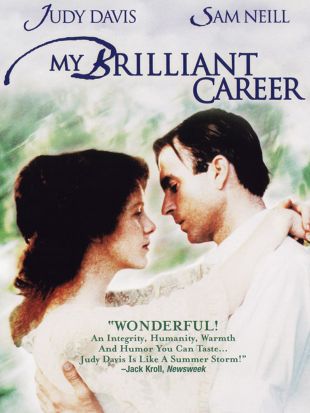A technical theatre student at Swinburne College, Gillian Armstrong studied filmmaking at the Melbourne and Australian Film and Television School, paying her tuition by working as a waitress. She functioned in several secondary technical capacities in the Australian film industry, then she made her mainstream directorial bow with the 1977 short The Singer and the Dancer, a soft-pedaled feminist tract which won an award at the Sydney Festival. Her first feature was My Brilliant Career (1979), which combined a modern sensibility concerning male/female relationships with the glossy romanticism of a 19th-century novel. Featuring a star-making turn by Judy Davis, My Brilliant Career garnered seven Australian Film Institute awards, firmly securing Armstrong's reputation and future in her native country.
Armstrong's next major feature, the American-financed Mrs. Soffel (1984), starred Diane Keaton and Mel Gibson. The real-life tale of a scandalous love affair between a prison warden's wife and a prisoner, it was moderately well-received. After directing two concert documentaries, Armstrong returned to Australia to make High Tide (1987), a drama about a woman (Judy Davis) struggling to reconcile herself with both her past and the daughter she abandoned at birth. Both that film and Armstrong's next major feature, the critically-acclaimed The Last Days of Chez Nous (1992), went largely unknown outside of her native country.
It was with her 1994 adaptation of Little Women that Armstrong earned a substantial degree of international recognition; featuring strong performances by the likes of Susan Sarandon, Winona Ryder, and Claire Danes, the film became one of the most popular of the year. Armstrong followed this success three years later with Oscar and Lucinda, an adaptation of the Peter Carey novel of the same name. Starring Ralph Fiennes and a then-relatively unknown Cate Blanchett as two misfits who fall in love in 19th-century Australia, the film was a model of strong production values and stellar performances, but received a mixed reception on both sides of the Pacific.


/_derived_jpg_q90_310x470_m0/LittleWomen_PA.jpg)